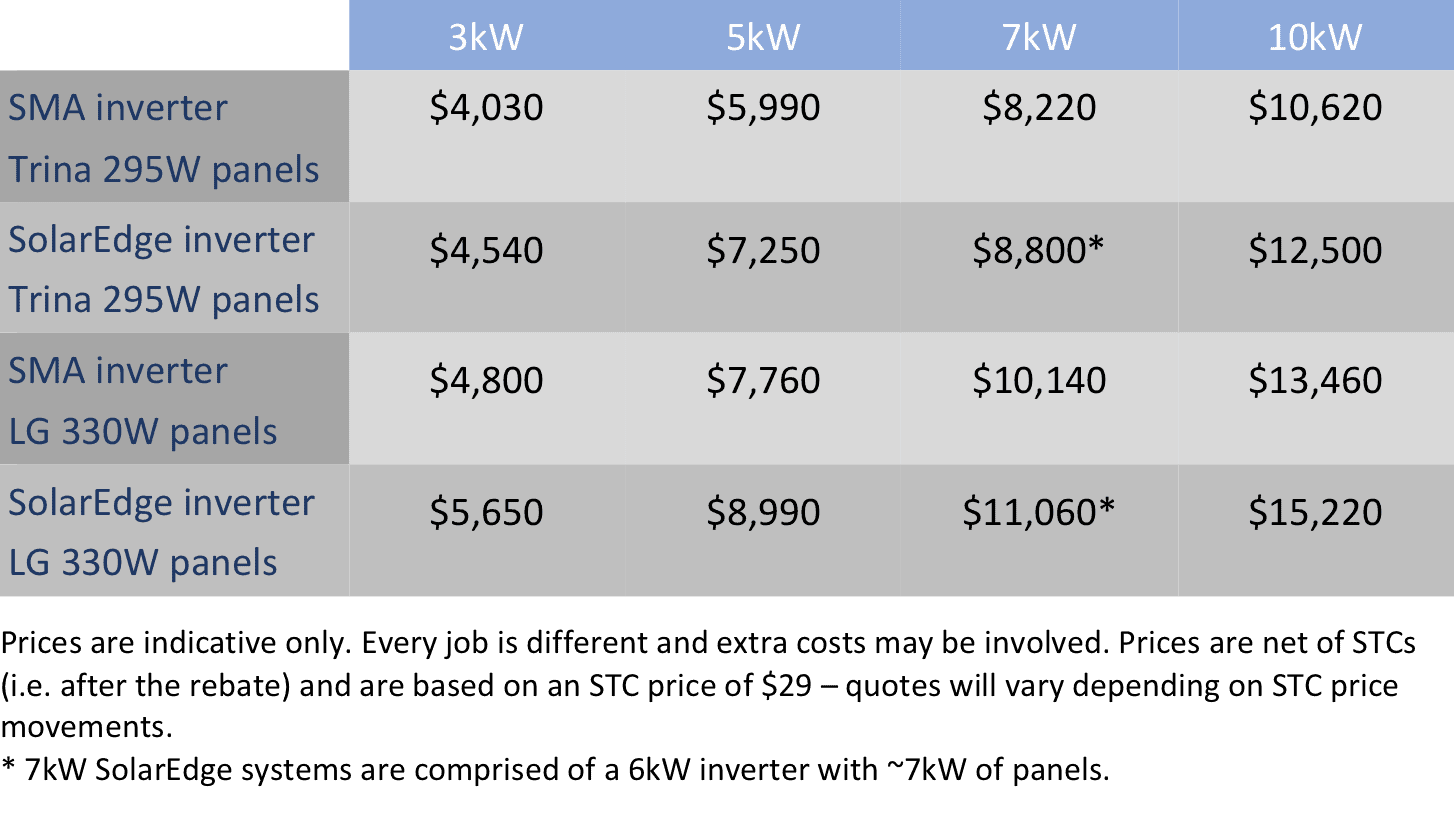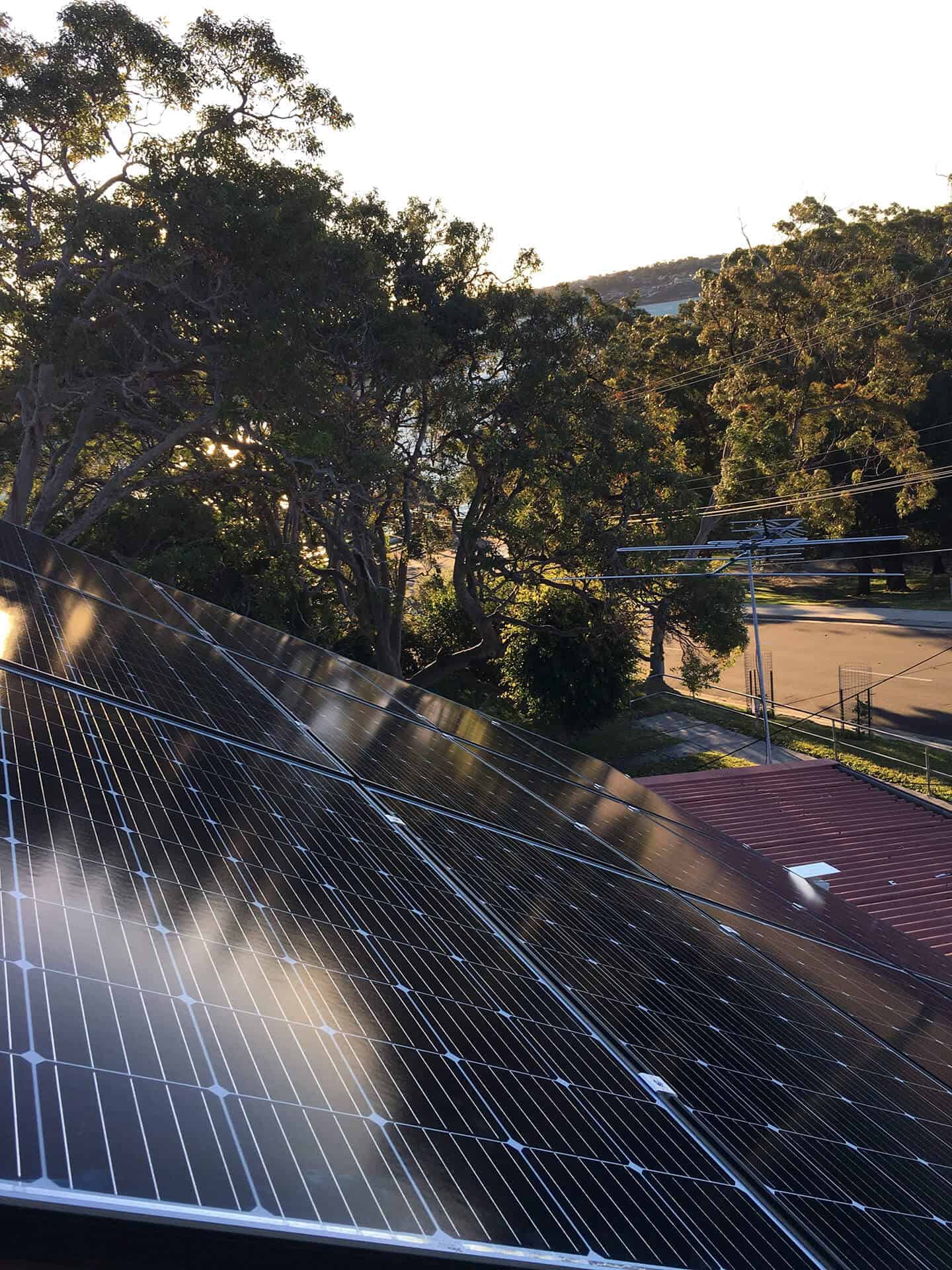This page contains details and frequently asked questions for Sunny Shire’s Rooftop Solar Bulk Buy 2, which started in August 2017.
Our bulk buy has seen 44 households have 243kW installed since starting in June, with another 145kW booked in for the next few weeks, why not join our community solar bulk buy and get energy independence!
How do I register?
See the registration page.Or go straight to the registration Google Form.
Prices

How good are the prices?
Quotes obtained through the bulk buy should be very competitive with other suppliers. We encourage participants to compare offers if they wish – we don’t mind where you get your solar from – we just love seeing more solar on roofs! Just make sure you are comparing apples with apples: all the equipment offered in the bulk buy is top-tier; there are cheaper panels and inverters on the market but as with most things you get what you pay for. Our goal is to help people get the right setup for their home using quality equipment and installers.
Additional Item: Meter Upgrade (usually required)
Your home may need a new digital bidirectional net meter, which may or may not be a smart meter. This is required by your retailer to correctly calculate energy imports and exports. If your home currently has the old spinning disc meters it will definitely require a meter upgrade.
The installer can arrange this for about $550 to $650 for homes with single phase power in most cases. If your home has 2- or 3-phase power, off-peak hot water or other complications it will cost more. The meter upgrade will usually occur two to three weeks after the solar installation.
Alternatively you may be able to obtain a meter upgrade from your retailer for free or a lower cost. Currently there are lengthy delays from most retailers to change a meter, in the order of several months.
The installer will answer any questions you have about the meter upgrade.
Additional Item: Consumption Monitoring
Consumption monitoring: $600 (more for 2 or 3 phase households)
This option allows monitoring of the energy consumption of your home and is highly recommended. See below for more details.
Warranties
| Component | Warranty | Notes |
| SMA Inverter | 5 years | Inverter warranty can be extended |
| SolarEdge Inverter and DC optimisers | 12 year inverter
25 year DC optimisers |
Inverter warranty can be extended |
| Trina panels | 10 year manufacturing
25 year output |
|
| LG panels | 12 year manufacturing
25 year output |
Number of Panels
Note: this table is just a guide – you don’t have to get exactly this many panels. The installer can advise when they provide a quote.
| Panel Type | 3kW | 5kW | 7kW |
| Trina 295W | 10 | 17 | 24 |
| LG 330W | 9 | 16 | 22 |
What size system should I get?
The right size will depend on various factors including your budget, availability of suitable roof space and your objectives. It is easier and cheaper to install a larger system up-front rather than starting smaller and adding panels later. This article provides several reasons for “going big” up front. This article presents an economic analysis showing that larger systems should save more money over time, despite the larger up-front cost and regardless of how much energy your household uses.
If your objective is to be as self-sufficient as possible then you’ll probably want a larger system. A 5kW system will produce about 19kWh per day on average. This is roughly equal to the average daily energy use of a fairly energy-efficient household. During winter it will produce less than 19kWh and during summer it will produce more. Installing an inverter larger than 5kW on a single phase supply requires permission from the network operator, although this permission is often granted. If such permission is required it will be arranged by the installer.
Can I have 6kW of panels with a 5kW inverter?
Yes, it is possible and generally recommended to install more panel capacity than the inverter’s rating. A multiple of 1.3 is the maximum, eg a 5kW inverter can support up to 6.5kW of panels. Installing more panels will result in greater energy output and does not damage the inverter. Adding more panels will increase the price but is good value per additional kW because the STC rebate is based on the capacity of the panels (not the inverter) plus the installation cost doesn’t increase by much. The installer can provide more details and a quote for your particular situation.
Can I get a different size to the sample prices, eg 4kW?
Yes. You can discuss your requirements with the installer and he will quote accordingly.
Which inverter should I choose?
Both options (SMA and SolarEdge) are quality, high-performing products. The main benefit of the SolarEdge inverter is the use of DC optimisers on each panel. This allows for increased system output in the following cases:
- partial shading of some panels
- differences in the orientation and tilt of panels
- differences between panels caused by manufacturing variation, dirt, bird droppings etc
This article demonstrates how the SolarEdge system can produce more output even if there are no partial shading issues.
The SMA inverter supports two groups (or “strings”) of panels and requires all panels in a group to be installed with the same orientation and tilt. If this is not possible on your roof and/or if you experience partial shading then the SolarEdge system may be a better choice. The installer can advise on your particular situation.
The SolarEdge inverter also comes with a much longer warranty: 12 years vs 5 for the SMA, although the SMA warranty can be extended for an extra fee.
Which panels should I choose?
Both options (Trina and LG) are quality, high-performing products.
The LG panels are one of the most advanced panels on the market. They:
- produce more power per panel: 330W vs 295W for Trina, so less panels are required for a given system size
- should produce more power in low light situations
- have a 12 year manufacturer’s warranty vs 10 year for Trina
- more details about the LG panels are explained in this article
The LG panels are more expensive. The Trina panels produce more output per dollar of cost compared to the LG panels and may be more economical in most situations, particularly if your roof has plenty of space.
Do these systems support a battery?
Yes, all systems here support adding a battery in the future.
What are the options for adding a battery?
There are two kinds of home batteries:
- AC batteries, eg Tesla Powerwall 2
- DC batteries, eg LG Chem RESU
AC batteries, such as the Tesla Powerwall 2, should be compatible with any solar PV inverter including those offered in this bulk buy. AC batteries have a built-in inverter and do not rely on the PV inverter.
The SMA inverter supports adding a DC battery later by adding a separate battery inverter: the SMA Sunny Boy Storage device.
The base SolarEdge inverter supports adding a DC battery later by adding the SolarEdge StorEdge Interface device.
Alternatively SolarEdge also offer a StorEdge inverter which combines the base inverter and the SolarEdge Interface into a single device. This costs ~$700 more than the base inverter, but means the ~$1,000 StorEdge Interface is not required, saving ~$300. This option makes sense for people who are planning to get a LG Chem RESU battery in the near future. If you are thinking of getting a Powerwall battery then the StorEdge option would be a waste of money.
Will these systems let me go “off grid”?
No, all inverters offered here are grid-tied and must be installed with a connection to the grid.
What happens in a blackout?
The SMA inverter and the regular SolarEdge inverter can not function during a blackout. It is not possible to generate or use solar PV electricity during a blackout with a grid-tied inverter.
The SolarEdge StorEdge inverter with a DC battery would allow some loads (eg lights, fridge etc) to continue operating during a blackout. Note that the StorEdge inverter requires a battery in order to operate during a blackout. If there is no battery it can’t produce any power from the solar panels even if the sun is shining.
What is consumption monitoring? Why does it cost more?
The consumption monitoring feature provides monitoring and reporting of your household’s energy use in near real time and recorded every 15 minutes. This feature provides insight into when your home uses energy and how much, providing crucial information to manage and optimise your self-consumption. For example, you can determine how much energy your dishwasher uses and when to run it so it can be powered by solar energy instead of importing energy from the grid. This will save money, which will help offset the additional cost of the monitoring option. It also monitors imports and exports from the grid which can be used for double-checking your electricity bill.
Both SMA and SolarEdge inverters require an extra device (an energy meter) to enable consumption monitoring, hence the additional cost. Without consumption monitoring both inverters will only monitor PV output and the only visibility of energy imports and exports will be your electricity bill.
How does the monitoring work?
Solar PV systems provide detailed monitoring of your solar production, and also home energy consumption and excess solar exports with the consumption monitoring options.
Both inverters (SMA and SolarEdge) connect to your home internet connection via Wi-Fi or Ethernet cable and send monitoring data to a system on the internet.
You can view your monitoring data from anywhere with an internet connection. Both systems provide apps for Android and Apple IOS. You can check the performance of your solar from work!
What if I don’t have a fixed home internet connection?
If you don’t have an always-on internet connection in your home (eg ADSL, Telstra/Optus Cable, NBN) you can still get solar – but the monitoring won’t be available. Please speak with the installer for more details.
Is my roof suitable for solar panels? Do they have to face North?
A decade ago solar panels were pretty much only installed facing north as they generate the most energy that way. But since the cost of solar has fallen so dramatically it is now economical to face them in any direction, including south! North-facing panels provide the most energy over the year, while west provides good output in the afternoon – useful for running air conditioners on hot days. East is good for getting energy in the mornings for your coffee and toast, and south may still be worthwhile if there is no space for more panels in other directions.
Most roofs are suitable for solar panel installation. If you have any concerns please mention them and the installer will speak with you about them.
—
For more information, email us at info@sunnyshire.org.au or join the Sutherland Shire Solar Facebook Group here: https://www.facebook.com/groups/1949184058638425/

